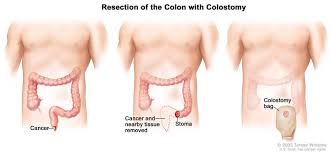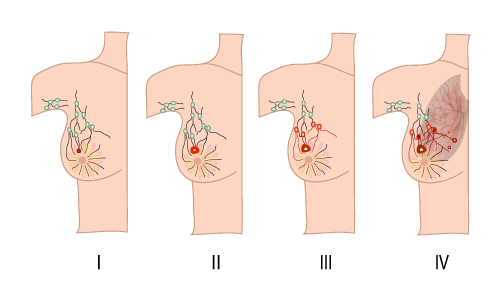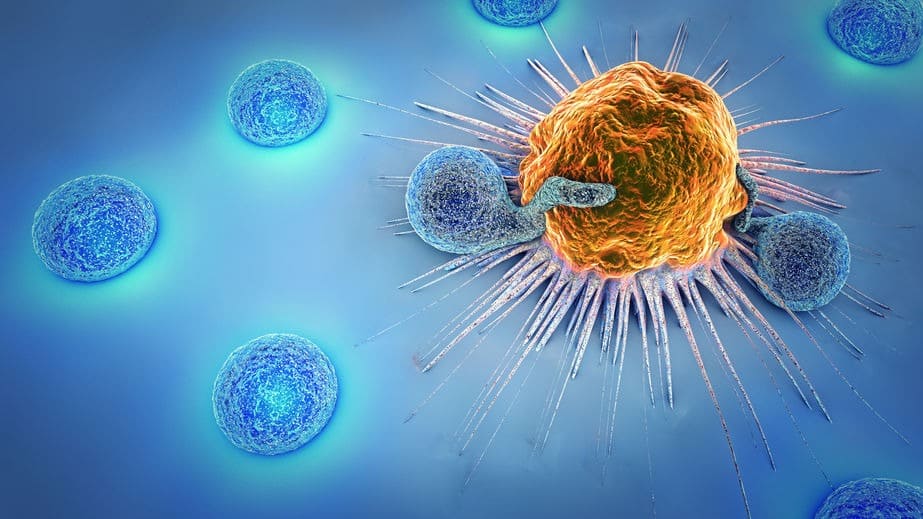AIDS-Related Lymphoma (ARL) - Causes, Symptoms & Treatment in India

AIDS-related lymphoma (ARL) is a form of cancer that arises in people living with Human Immunodeficiency Virus (HIV). As one of the most common HIV-associated malignancies, ARL presents unique clinical challenges due to immune suppression and the aggressive nature of the disease. However, with the advent of effective antiretroviral therapy (ART) and advanced oncologic treatments, outcomes have significantly improved.
In this blog, we will explore what ARL is, its causes, symptoms, diagnosis, treatment options, and why early intervention is critical.
What is AIDS-Related Lymphoma?
AIDS-related lymphoma (ARL) refers to a group of aggressive non-Hodgkin lymphomas that occur in individuals living with Human Immunodeficiency Virus (HIV) or Acquired Immunodeficiency Syndrome (AIDS). These lymphomas are classified as AIDS-defining cancers, meaning their presence often indicates progression from HIV to AIDS.
In a healthy immune system, lymphocytes (a type of white blood cell) help fight infections. However, HIV weakens the immune system, making the body vulnerable to uncontrolled cell growth, including cancerous lymphocytes. As a result, people with HIV are at a significantly higher risk of developing certain lymphomas compared to the general population.
The most common subtypes of ARL include:
- Diffuse Large B-Cell Lymphoma (DLBCL): The most frequently diagnosed ARL, known for its rapid progression.
- Burkitt Lymphoma: A highly aggressive subtype linked to Epstein-Barr Virus (EBV).
- Primary Central Nervous System (CNS) Lymphoma: Often occurs in patients with severe immune suppression and affects the brain and spinal cord.
These lymphomas typically behave more aggressively in people with HIV and require prompt diagnosis and intensive treatment, often in conjunction with antiretroviral therapy (ART) to improve immune function and treatment response
Causes and Risk Factors
AIDS-related lymphoma (ARL) arises primarily due to the interaction between HIV-induced immune suppression and oncogenic viruses, particularly Epstein-Barr Virus (EBV). HIV weakens the immune system by targeting CD4+ T cells, making it less capable of controlling abnormal cell growth and viral reactivations, which contributes to the development of lymphomas.
Key Causes:
- HIV Infection: The persistent immune suppression caused by HIV creates an environment in which malignant cells can develop and proliferate.
- Epstein-Barr Virus (EBV): A common herpesvirus that has been directly implicated in the pathogenesis of several ARL subtypes, especially Burkitt and CNS lymphoma.
Major Risk Factors:
- Low CD4 Cell Count: A count below 200 cells/μL is strongly associated with increased lymphoma risk.
- High HIV Viral Load: Indicates uncontrolled HIV replication and immune compromise.
- Delayed Initiation of ART: Patients not receiving or delaying antiretroviral therapy are at a higher risk.
- Chronic Immune Activation: Long-standing immune system activation leads to increased inflammatory cytokines that can promote cancer development.
- Co-infections: Hepatitis B, C, and other viral infections may further complicate immune responses.
Symptoms of ARL
AIDS-related lymphoma can present with a wide range of symptoms, which may be similar to those caused by common infections seen in individuals with HIV. The symptoms typically depend on the location and type of lymphoma, and due to the immunocompromised state of patients, they may develop more rapidly and aggressively than in the general population.
Common Systemic Symptoms:
- Persistent fever: Often unexplained and resistant to antibiotics
- Night sweats: Profuse sweating during sleep without obvious cause
- Unintentional weight loss: Rapid and significant reduction in body weight
- Fatigue: Constant tiredness not relieved by rest
Localized Symptoms:
- Swollen lymph nodes: Especially in the neck, armpits, or groin, which are typically painless and firm
- Abdominal pain or swelling: May indicate lymph node involvement in the abdomen or spleen enlargement
- Chest pain or shortness of breath: If lymph nodes in the chest are affected
Neurological Symptoms (in CNS Lymphoma):
- Headaches: Persistent and worsening
- Seizures: New onset in individuals with no history
- Confusion or personality changes: Indicative of brain involvement
- Visual or speech disturbances
Due to the nonspecific nature of these symptoms, ARL is often diagnosed late. Timely recognition and evaluation are crucial, particularly in individuals with low CD4 counts or untreated HIV. If ARL is suspected, immediate referral for diagnostic testing and specialist care is essential.
Diagnosis of ARL
Diagnosing AIDS-related lymphoma (ARL) requires a thorough and multidisciplinary approach due to the complexity of symptoms and the patient's immunocompromised status. Early and accurate diagnosis is essential for initiating timely treatment and improving outcomes.
Step-by-Step Diagnostic Approach:
-
Clinical Evaluation
-
A detailed history and physical examination, especially noting lymph node enlargement, fever, weight loss, or neurological symptoms.
-
-
Lymph Node or Tissue Biopsy
-
This is the gold standard for confirming the diagnosis. A complete excisional biopsy is preferred over fine-needle aspiration to assess the tissue architecture.
-
-
Imaging Studies
-
CT Scan or MRI: Helps determine the size, number, and location of involved lymph nodes or organs.
-
PET-CT Scan: Useful for staging and assessing metabolic activity of the tumor.
-
-
Laboratory Tests
-
HIV Viral Load and CD4 Count: Assess the severity of immune suppression and monitor HIV progression.
-
Complete Blood Count (CBC) and Liver/Kidney Function Tests: Evaluate overall health status and identify organ involvement.
-
-
Bone Marrow Aspiration and Biopsy
-
Recommended in some cases to check for marrow infiltration by lymphoma cells.
-
-
Lumbar Puncture (Spinal Tap)
-
Essential for patients with CNS symptoms to detect lymphomatous involvement of the cerebrospinal fluid (CSF).
-
-
Immunohistochemistry and Flow Cytometry
-
Helps in classifying the lymphoma subtype and guiding therapy.
-
Timely diagnosis allows clinicians to initiate appropriate chemotherapy regimens and antiretroviral therapy, improving both cancer control and HIV outcomes.
Types of AIDS-Related Lymphoma
| Type | Features |
|---|---|
| Diffuse Large B-Cell Lymphoma | Most common ARL; rapid progression |
| Burkitt Lymphoma | Highly aggressive; associated with EBV |
| Primary CNS Lymphoma | Affects brain/spinal cord; common in very low CD4 counts |
| Hodgkin Lymphoma (increased risk) | Less common but more prevalent in people with HIV |
Treatment Options for ARL
Managing AIDS-related lymphoma (ARL) requires a coordinated treatment strategy that targets both the lymphoma and the underlying HIV infection. Treatment is most successful when provided through a multidisciplinary team involving oncologists, infectious disease specialists, and hematologists. The main pillars of ARL treatment include antiretroviral therapy, chemotherapy, targeted therapy, and in some cases, radiation.
1. Antiretroviral Therapy (ART)
Antiretroviral therapy is critical for improving immune function in people with HIV. Initiating or continuing ART during cancer treatment helps:
- Suppress the HIV viral load
- Increase CD4 cell counts
- Reduce the risk of opportunistic infections
- Improve tolerance to chemotherapy and enhance overall survival
2. Chemotherapy
Chemotherapy is the cornerstone of ARL management. The choice of regimen depends on the lymphoma subtype:
- Diffuse Large B-Cell Lymphoma (DLBCL): Treated with CHOP (Cyclophosphamide, Doxorubicin, Vincristine, Prednisone) or R-EPOCH (Rituximab with Etoposide, Prednisone, Vincristine, Cyclophosphamide, and Doxorubicin)
- Burkitt Lymphoma: Requires aggressive regimens such as CODOX-M/IVAC or HyperCVAD
Patients may need dose adjustments based on performance status and immune function.
3. Radiation Therapy
Radiation therapy may be used:
- As palliative care to reduce tumor size or relieve symptoms
- For localized disease, particularly in CNS involvement or bulky tumors
4. Targeted Therapy
-
Rituximab, a monoclonal antibody targeting CD20, is used in CD20-positive B-cell lymphomas. When combined with chemotherapy, it significantly improves remission and survival rates.
5. CNS Prophylaxis and Treatment
-
Patients with high-risk disease or CNS involvement may require intrathecal chemotherapy (e.g., methotrexate or cytarabine) to prevent or manage spread to the brain and spinal cord.
6. Supportive Care
- Growth factors (like G-CSF) to prevent neutropenia
- Antimicrobial prophylaxis
- Nutritional support and psychological counseling
Combining ART with an appropriate cancer treatment plan improves survival outcomes and quality of life for individuals diagnosed with ARL.
Challenges in Treatment
- Drug interactions between ART and chemotherapy
- Increased toxicity and opportunistic infections
- Need for close monitoring and supportive care
Prognosis and Survival Rates
Outcomes have improved with combined ART and chemotherapy. Factors influencing prognosis include:
- CD4 count at diagnosis
- HIV viral load
- Type of lymphoma
- Response to initial therapy
With optimal treatment:
- Remission rates exceed 60% in DLBCL
- CNS lymphoma remains more challenging but can respond with early intervention
Why Early Diagnosis Matters
Early diagnosis of AIDS-related lymphoma (ARL) is critical to improving patient outcomes and survival. Because ARL is often aggressive and rapidly progressive, especially in individuals with compromised immune systems, timely identification and treatment initiation can be life-saving.
Benefits of Early Diagnosis:
- Expanded Treatment Options: Patients diagnosed in early stages are more likely to be eligible for curative treatment protocols.
- Better Immune Recovery: When treatment is initiated early alongside ART, immune function can be preserved or restored more effectively.
- Improved Survival Rates: Early intervention significantly improves remission and survival rates, especially in diffuse large B-cell and Burkitt lymphoma.
- Reduced Complications: Early management minimizes the risk of opportunistic infections, treatment-related toxicities, and organ damage.
- CNS Involvement Prevention: Timely CNS prophylaxis in high-risk cases can prevent disease spread to the brain and spinal cord.
Who Should Be Screened?
- People with newly diagnosed HIV or AIDS
- HIV-positive individuals with persistent lymphadenopathy, unexplained fevers, or weight loss
- Patients with a CD4 count below 200 cells/μL
- Anyone with neurological symptoms or rapid clinical deterioration
Raising awareness about the symptoms and promoting routine screening among HIV-positive individuals can lead to earlier detection, better clinical outcomes, and enhanced quality of life.
ARL Treatment in India
India has emerged as a hub for affordable and quality cancer treatment, including ARL. Top hospitals like Fortis Memorial Research Institute, AIIMS, Apollo, and Max Healthcare provide:
- Advanced diagnostics
- Experienced oncologists
- Access to ART and chemotherapy
- Support for international patients
Treatment cost in India is significantly lower compared to Western countries, making it a preferred destination for medical tourists.
Final Thoughts
AIDS-related lymphoma is a serious but treatable condition. With advancements in HIV care and cancer therapy, many patients achieve remission and long-term survival. Early diagnosis, a coordinated care approach, and ongoing support are critical to successful outcomes.
If you or someone you know is living with HIV and experiencing unexplained symptoms, do not delay seeking medical attention. Early intervention can be life-saving.
Need Help? Consult with a hematologist-oncologist or visit a specialized cancer center for comprehensive evaluation and care.


